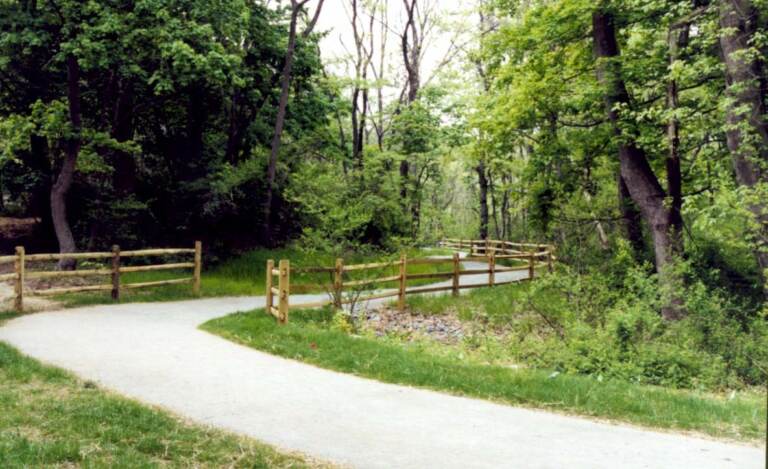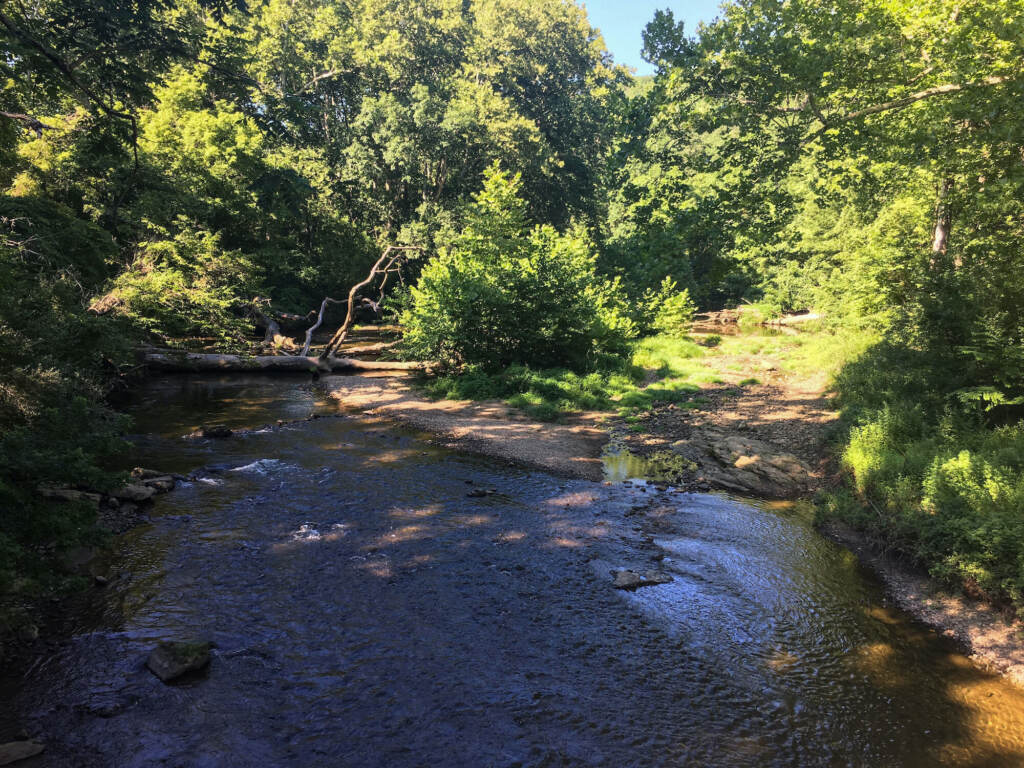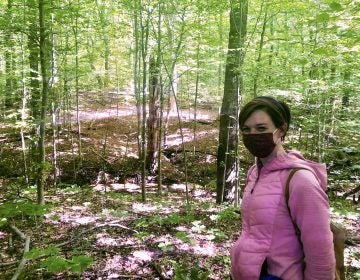Northern Delaware’s largest state park gets a new master plan
White Clay Creek State Park is already one of the most popular parks in Delaware. Now, there’s a new plan to improve its amenities for the future.

White Clay Creek State Park is a popular spot for mountain biking and hiking. It's just minutes away from both Wilmington and Newark. (Cris Barrish/WHYY)
More than 200,000 people go to White Clay Creek State Park every year to bike and hike along more than 30 miles of trails across the park’s 3,647 acres.
This week, state park leaders unveiled the proposed master plan for future changes to the park. It’s a document that’s been in development for years.
“The process has taken longer than we wanted and expected,” said Shawn Garvin, secretary of the Department of Natural Resources and Environmental Control, which oversees Delaware’s parks.
Garvin said the master plan provides a vision and framework for use of White Clay for at least the next decade.
“Our goal is to provide a clear path moving forward,” said Garvin. “And this master plan will also be a reference for park staff, volunteers, and others interested in the park. I expect the master plan to be a living document that will be updated as we go forward to remove items that are completed and add future goals as they are developed.”
White Clay already has more trails than any other state park in Delaware, but the master plan would reconfigure some of those routes and add even more. Among the new trails would be a connector route linking the Carpenter Recreation Area and the Creek valley, two main recreation locations in the park. That trail would cost an estimated $200,000.
The mountain bike skills trail would also get an upgrade. Currently, the trail combines natural obstacles and ramps and other features that are a favorite of local riders. Under the plan, a professional engineering firm would be hired to evaluate existing components of the skills park and recommend ways to enhance the course.
The full plan is generally supported by the Friends of White Clay Creek State Park, said the group’s president, Dave Koppeser.

“We feel the plan is comprehensive and captures the large array of challenges facing the park,” Koppeser said. “The Friends hope that outreach to park users will continue and the public will be involved in the implementation process.”
He thanked state lawmakers for allocating $300,000 this year to fund a study of improvements to the park’s nature center. “Of course, we are now expecting that support to continue in next year’s capital improvement budget for actual construction money.”
Currently, the park only offers one primitive camping area primarily used by youth groups. Under the master plan, adding another camping area will be explored. Visits to state park campsites and cabins have increased across Delaware by 65%, but the majority of camping facilities are in the southern part of the state. The cost of adding new camping facilities could be as high as $1 million.
The new master plan hopes to better use existing buildings on the park property. That calls for the park’s offices to move to the Chambers House, which was built about 200 years ago. The structure would also serve as a welcome center. The nearby Robinson House would be transformed into staff housing. Those moves would cost an estimated $200,000.
DNREC’s Bill Miller said those buildings will be used, too, to tell “the story of the reservoir that essentially never was.”

In the 1960s, there were plans for the White Clay Creek to stopped by a dam, flooding much of the area covered by the park today. Opposition from local residents eventually staved off the project, preserving the land to be used for recreation.
The Division of Parks and Recreation wants to improve partnerships for about half of the 75 buildings located in the park that are currently underutilized. That includes a number of barns and farm buildings left over from the time when what is now parkland was used for agriculture.
The plan also calls for better protections and enhancement of both the native ecology and cultural history of the park.

Get daily updates from WHYY News!
WHYY is your source for fact-based, in-depth journalism and information. As a nonprofit organization, we rely on financial support from readers like you. Please give today.







